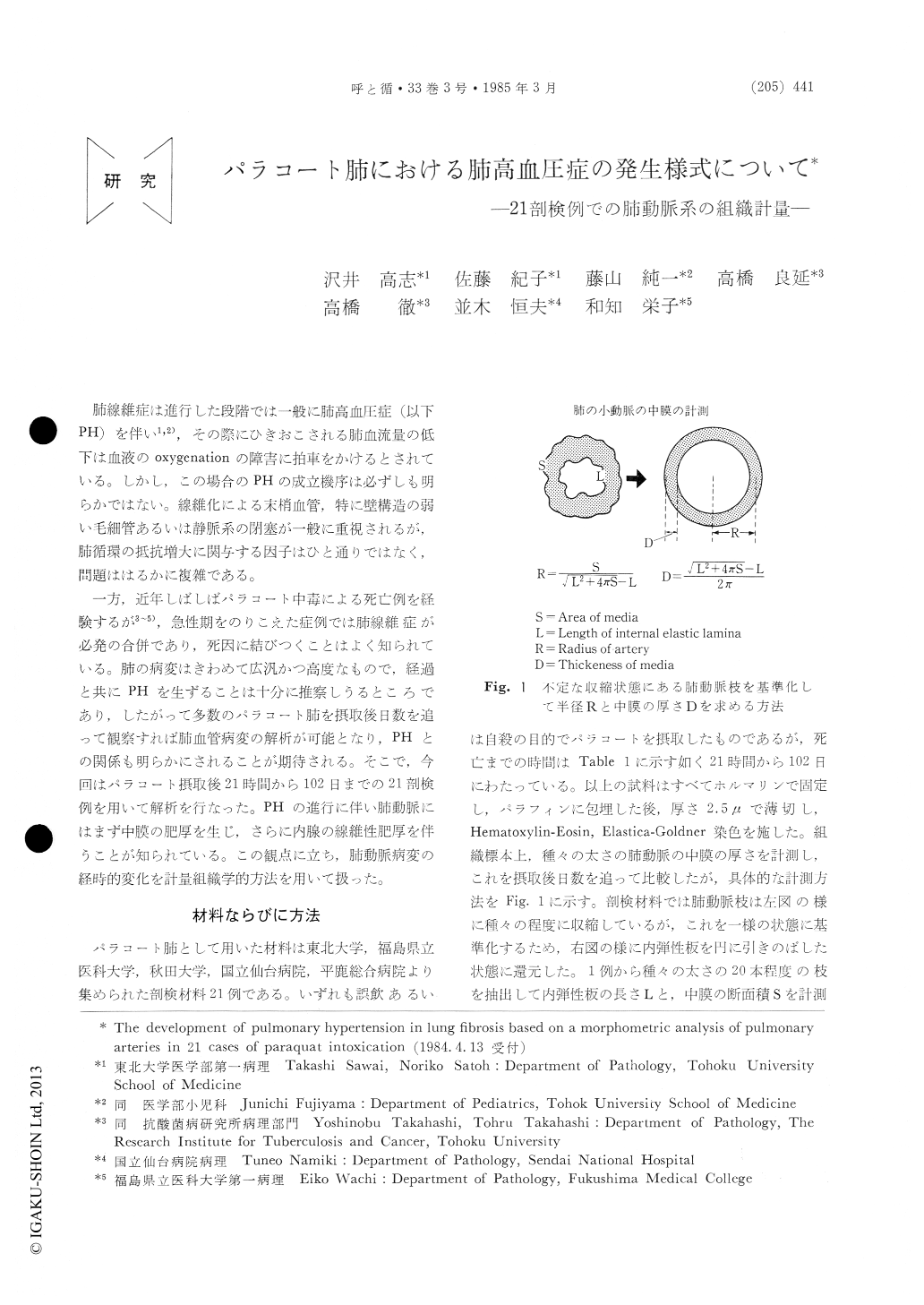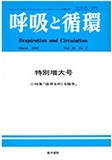Japanese
English
- 有料閲覧
- Abstract 文献概要
- 1ページ目 Look Inside
肺線維症は進行した段階では一般に肺高血圧症(以下PH)を伴い1,2),その際にひきおこされる肺血流量の低下は血液のoxygenationの障害に拍車をかけるとされている。しかし,この場合のPHの成立機序は必ずしも明らかではない。線維化による末梢血管,特に壁構造の弱い毛細管あるいは静脈系の閉塞が一般に重視されるが,肺循環の抵抗増大に関与する因子はひと通りではなく,問題ははるかに複雑である。
一方,近年しばしばパラコート中毒による死亡例を経験するが3〜5),急性期をのりこえた症例では肺線維症が必発の合併であり,死因に結びつくことはよく知られている。肺の病変はきわめて広汎かつ高度なもので,経過と共にPHを生ずることは十分に推察しうるところであり,したがって多数のパラコート肺を摂取後日数を追って観察すれば肺血管病変の解析が可能となり,PHとの関係も明らかにされることが期待される。そこで,今回はパラコート摂取後21時間から102日までの21剖検例を用いて解析を行なった。PHの進行に伴い肺動脈にはまず中膜の肥厚を生じ,さらに内腺の線維性肥厚を伴うことが知られている。この観点に立ち,肺動脈病変の経時的変化を計量組織学的方法を用いて扱った。
To study how fibrotic lung diseases generate pul-monary hypertension, autopsy lungs from 21 pa-tients dying one to 102 days after ingestion of par-aquat were analyzed in terms of morphometry of pulmonary arteries. Because of the different length of survival, the series included a wide variety of pulmonary changes ranging from slight edema toadvanced fibrosis. In view of the well known fact that small pulmonary arteries respond to hyperten-sion by thickening their media, arterial cross sec-tions were sampled on microscopic sections of lung to determine the medial thickness D in relation to the radius R; this was performed at an anatomi-cally standardized state where the internal elastic lamina, usually meandering due to arterial contrac-tion, was distended to form a circle of the same perimeter length. In each case there was a close correlation between R and D, and the grade of medial hypertrophy was represented by the expec-ted value of D at R= 100μ, which was calculated from the regression equation. Seeing that the intima also appeared to thicken as fibrosis progressed, its contribution to stenosis was expressed with its per-centile area on section. It was demonstrated that in paraquat intoxication, D at R=100μ that was normally about 8μ began to rise as early as at the 8th day, when the lung histology as yet disclosed no sign of fibrosis but for the intra-alveolar exudation with beginning proliferation of mesenchymal cells. The level of D was gradually elevated thereafter, reaching the highest level of 18μ at about 3 mon-ths and at this stage the alveoli were almost total-ly obstructed with fibrous tissues. Thus the medial thickening apparently preceded lung fibrosis: The elevated resistance to pulmonary blood flow was not only due to fibrotic obliteration of peripheral vessels, but also due to reactive contraction of small arte-ries which, triggered at an unexpectedly early stage of intoxication either by alveolar hypoxia or by con-comitant shock, was considered to play an impor-tant role in generating pulmonary hypertension. Also the measurement disclosed gradual thickening of intima which, as an irreversible process, was con-sidered responsible for fixing the elevated vascular resistance.

Copyright © 1985, Igaku-Shoin Ltd. All rights reserved.


